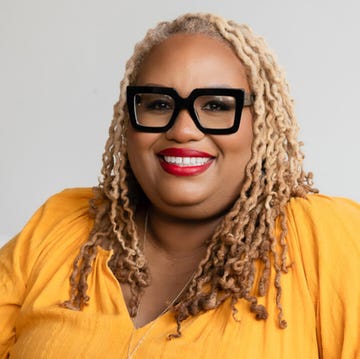The dizzying upheaval of the pandemic changed how we interacted with one another. In a world of masks and social distancing, physical contact was inevitably affected—in lieu of hugs, many people gave one another elbow bumps or touched ankles. The importance of touch to mental health became even more pronounced.
In Jenny Xie’s debut novel, Holding Pattern, touch serves as a conduit for trauma, first-generation guilt, grief, heartbreak, and starting over. After a major breakup and doubt about her academic journey, a character named Kathleen moves back in with her mother, Marissa, in Oakland. Flashbacks offer glimpses of her fraught childhood. In one, a teenage Kathleen, reeling from her father’s abandonment, watches her mother turn to alcohol for solace. Kathleen yearns for her mother’s approval but rarely receives it; she often cleans up after the older woman, resenting her drinking. As the novel progresses, Xie crafts a complex mother-daughter relationship, exploring the muddiness of care and connection between two very different people.
Holding Pattern opens as Kathleen and Marissa shop for a maid of honor dress. The dynamic they share becomes clear quickly: Marissa experienced hardships like a “rationed childhood in Shanghai” and doesn’t mince words when critiquing her daughter’s physical appearance. Kathleen bristles against her mother’s new life, including her engagement to a Silicon Valley entrepreneur named Brian.
Kathleen’s academic work is in haptics and cognition, particularly how people interact with touch. Xie places us in the character’s body right from the start. An encounter with a stranger at a party rapidly turns ominous. “His face was a shifting veil of shadow except for the silvery glint of teeth,” Kathleen recounts.
Eventually, she takes an unexpected new job, as a professional cuddler at a company called Midas Touch. The conceit fulfills her need to do something different, but even as she spends time cuddling with strangers, she can’t seem to get any closer to her mother. The gulf between the two of them remains too big. “She was like anyone you loved, in that way—the more intimately you knew her, the more closely you beheld the wild, unbreachable distance that would keep you from perfect understanding,” Kathleen reflects.
Holding Pattern largely frames its portrait of Kathleen through her relationships with others: not only her mother but also her ex-boyfriend Oren (whom she had planned to marry), her close friend LB, her ex–high school boyfriend Andrew, and her frequent Midas Touch client Phil. Rarely in the book is she entirely alone, although that doesn’t mean she isn’t lonely. To watch her continually refract her identity through the people around her can feel exhausting at times, but maybe that’s because it rings like a familiar refrain. Kathleen’s need for validation, for being seen, is something the character never addresses out loud, yet it echoes loudly throughout the pages of the novel.
Amid the heavy topics here, Xie seeds her narrative with tongue-in-cheek references to Silicon Valley tropes: the flashy lifestyles, the forced networking and constant chatter about who is disrupting what. The author’s background in writing for design publications—her work has appeared in Dwell and Architectural Digest, among other venues—shines through in her expertly crafted portrayal of the workspace at Midas Touch. Here, she paints a nightmarish picture of a tech-forward office with manicured modern design elements that thinly veil the company’s nefarious intention to use its clients’ isolation and lack of touch for profit. The strange role of social media fuels a concurrent storyline that involves a rat influencer. Kathleen, of course, can’t help but see through these manufactured worlds.
Holding Pattern is a book about the nuances of touch: when we hold it back versus when we give it freely, what it means to seek it from strangers, what happens when it’s commodified. There’s not an easy fix for Kathleen’s ache to be touched—no matter how much research she does.•
Eva Recinos is an arts and culture journalist and creative non-fiction writer based in Los Angeles. Her reviews, features, and profiles have been featured in the Los Angeles Times, KCET, the Guardian, Hyperallergic, Art21, Aperture, Poets & Writers Magazine, the Creative Independent, and more. She writes a monthly newsletter, Notes from Eva, that includes links to opportunities for creatives.













